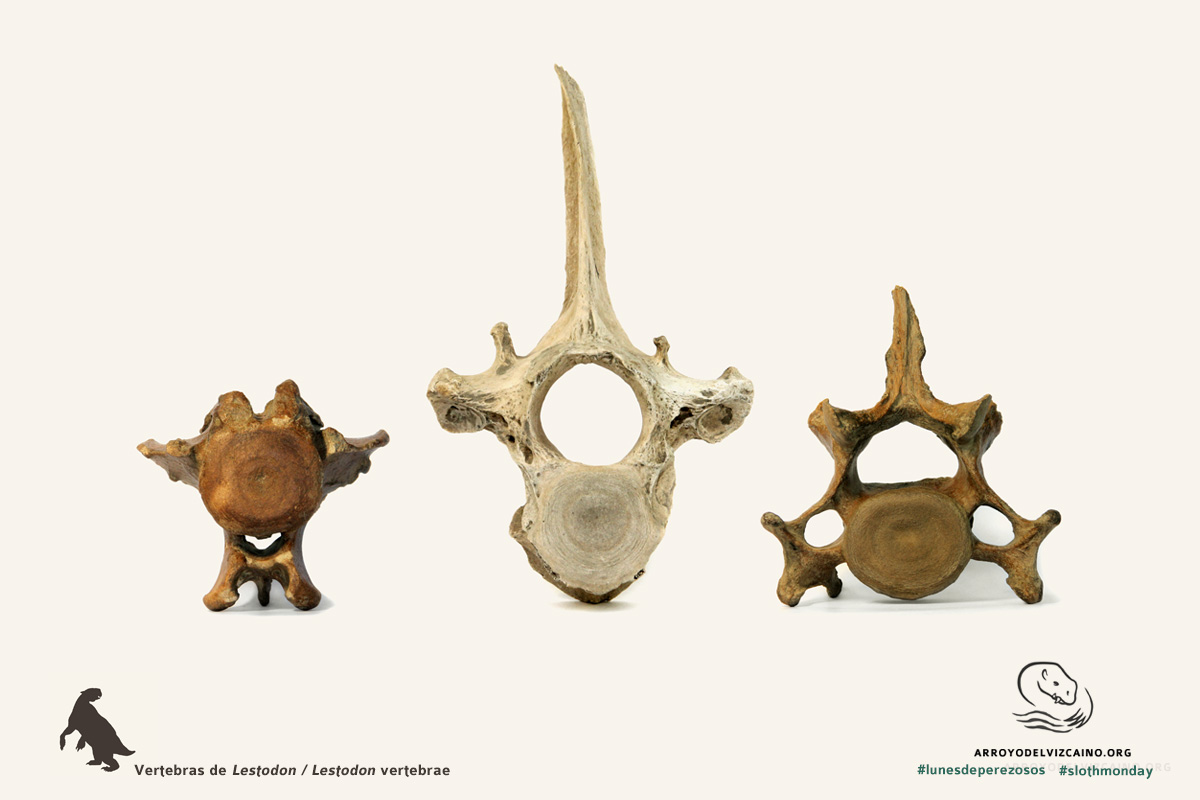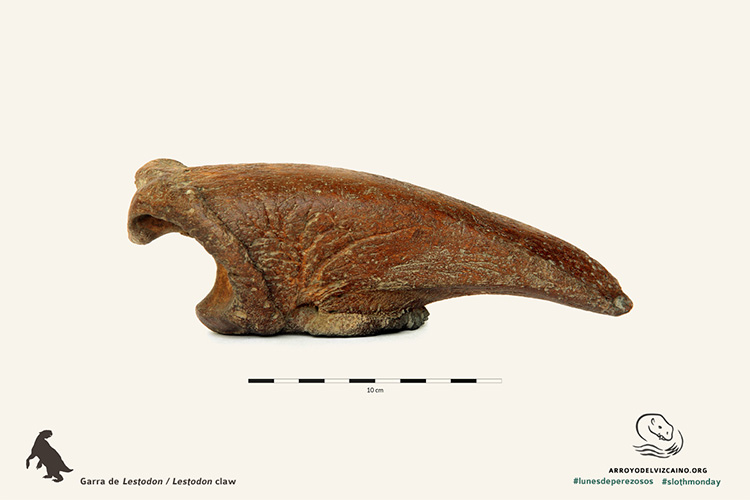
The teeth of sloths
Another anatomical feature of sloths (and of xenarthrans in general) is the lack of incisives. Moreover, the teeth they have are hard to ascribe to those of other placentals, ie, they cannot be called canines, premolars and molars. For that reason, the teeth of sloths are called molariforms and they typically have 5 in the upper jaw and 4 in the lower jaw.
However, in several species the most anterior teeth are modified in such a way that they resemble canines and are consequently called caniniforms. It is interesting to note that the upper caniniform occludes before the lower caniniform, differently to what happens in true canines.
Lestodon is the taxon that shows the largest caniniforms

The vertebrae of xenathrans
Sloths are classified in the superorder Xenarthra, a group of placental mammals that also includes armadillos and anteaters. Among their varied anatomical peculiarities, their vertebra have extra intervertebral joints that give name to the whole group (Xenarthra means strange joints). Those strange joints are found specifically in the lumbar and last thoracic vertebrae.
In mammals, the vertebrae articulate to each other with two pair (one anterior and one posterior) joints in the processes called zygapophyses, which help in the stability of the backbone. However, xenarthrans have at least two pairs of those intervertebral joints.
It is likely that the first xenarthrans were powerful diggers, such as armadillos are today, and those joints must have evolved to give the backbone even more stability.

What is a sloth?
Sloths are a group of mammals that nowadays live hanging from the trees and move really slow. However, this was not always the case; more than 10,000 years ago there were, in vast regions of the Americas, several species of sloths that reached body masses of about 5 tonnes. These animals were not slow at all and they definitely did not sleep on trees.
But, what do they have in common, then? The easiest thing to see is the really big claws they have in all four limbs, which were also a feature of the giant sloths. And if we look at their teeth, we will find they have no incisives nor true canines.
Follow us later on for another #slothmonday to learn about the unique vertebrae these animals had and about their unusual locomotion styles.


